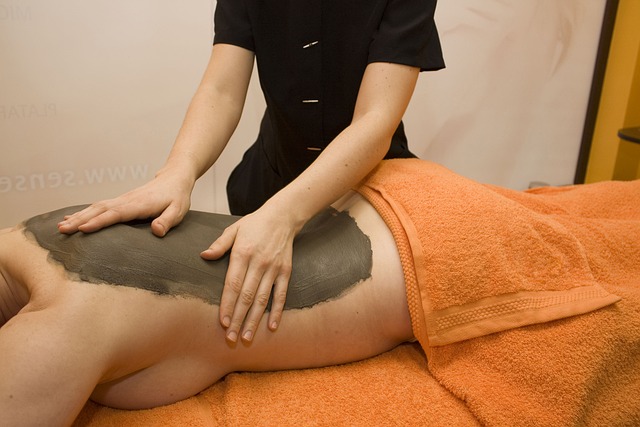Cold plunge therapy, including ice baths and cold water immersion, is a growing trend among professional athletes seeking improved athletic recovery, reduced inflammation, and enhanced performance. By immersing themselves in frigid water post-exercise, athletes can promote muscle repair, minimize swelling, enhance circulation, and experience quicker recovery times. This ancient practice stimulates the body's natural healing processes, reduces pain, and boosts endurance. While regular cold plunges offer various benefits, such as flushing out metabolic waste and delaying fatigue, they should be approached with caution to avoid hypothermia, with tailored routines guided by sports medicine professionals for optimal results in athletic recovery, performance, and injury prevention.
Professional athletes constantly seek innovative methods to enhance their performance and accelerate recovery. One such emerging practice gaining traction in the world of sports is cold plunge therapy. This article explores the benefits of this unconventional approach, delving into the science behind cold water immersion and its potential to revolutionize athletic recovery. We’ll discuss practical applications, from post-workout ice baths to long-term considerations for injury prevention, providing insights for athletes looking to harness the power of cold therapy.
Understanding Cold Plunge Therapy: Unlocking the Benefits for Athletes
Cold plunge therapy, also known as cold water therapy or ice baths, has gained significant attention among professional athletes looking to enhance their recovery and performance. This therapeutic technique involves immersing oneself in frigid water, typically around 50-59°F (10-15°C), for a short period after intense physical activity. By doing so, athletes unlock a range of benefits that contribute to improved athletic recovery.
One of the key advantages is its ability to reduce inflammation and promote muscle repair. The cold temperature constricts blood vessels, limiting blood flow to damaged areas, which helps minimize swelling and pain. This process facilitates faster healing and reduces the risk of further injury. Additionally, post-workout cold water immersion enhances circulation when athletes emerge from the cold, ensuring efficient removal of metabolic waste products and delivering oxygen-rich blood to tired muscles. As a result, athletes often experience reduced muscle soreness and quicker recovery times, enabling them to return to training or competition sooner. With its potential to improve athletic performance and prevent injuries, cold plunge therapy is becoming an integral part of many professional sports teams’ recovery routines.
The Science Behind Cold Water Immersion and Athletic Recovery
The science behind cold water immersion suggests that submerging oneself in frigid temperatures post-workout can significantly enhance athletic recovery. When athletes engage in a cold plunge, whether it’s an ice bath or a cold shower, blood vessels constrict, reducing inflammation and pain associated with intense exercise. This process also redirects blood flow to the body’s core, promoting faster repair of damaged muscles and connective tissues. The benefits of cold plunges extend beyond immediate relief; they can contribute to improved athletic performance by accelerating muscle recovery, enhancing endurance, and potentially reducing the risk of future injuries.
For athletes, incorporating post-workout cold water immersion into their routines offers a natural and effective way to combat muscle soreness and fatigue. Ice baths and cold showers stimulate the release of endorphins, known for their pain-relieving and mood-boosting effects, further enhancing the recovery process. As research continues to explore the potential of cold therapy for injury prevention and performance optimization, professional athletes are increasingly turning to this ancient practice for its scientifically backed benefits in promoting overall athletic wellness.
Practical Applications: Incorporating Cold Plunges into Training Regimes
Professional athletes are increasingly incorporating cold plunge therapy into their training regimens, leveraging its numerous benefits for athletic recovery and performance enhancement. Cold water immersion, whether in an ice bath or through post-workout cold water sessions, has been shown to reduce muscle soreness and inflammation, key factors in preventing injury and promoting faster recovery times. The practice involves submersion in cold water, typically below 59°F (15°C), for a set period, stimulating a range of physiological responses that aid the body’s natural healing processes.
Beyond its immediate effects on muscle recovery, regular cold plunges can also improve circulation and enhance overall athletic performance. By increasing blood flow to active muscles and tissues, cold water therapy helps flush out metabolic waste products, reducing lactic acid buildup and delaying the onset of fatigue during workouts or competitions. This not only extends endurance but also improves strength and agility, making it a valuable tool for athletes looking to stay at the top of their game.
Long-term Effects and Considerations for Professional Athletes' Wellness
Cold plunge therapy, particularly through ice baths or post-workout cold water immersion, has gained popularity among professional athletes as a tool for athletic recovery and performance enhancement. While short-term benefits like reduced inflammation and muscle soreness have been well-documented, long-term effects are less understood. Continuous exposure to cold water therapy may contribute to improved circulation and enhanced cellular repair mechanisms over time, potentially reducing the risk of chronic injuries in high-performance athletes.
However, there are considerations for athletes seeking to incorporate cold plunge as a wellness practice. Prolonged or excessive cold water immersion can lead to hypothermia, particularly in vulnerable individuals. Athletes should also be mindful of balance and hydration levels after such sessions. Moreover, individual variations in tolerance and response to cold therapy mean what works for one athlete may not be suitable for another. Therefore, consulting with sports medicine professionals is crucial to tailor cold plunge routines for optimal athletic performance and injury prevention while minimising potential adverse effects.
Professional athletes’ experiences with cold plunge therapy highlight its potential as a powerful tool for athletic recovery. The scientific evidence supports its benefits in reducing inflammation, easing muscle soreness, and enhancing overall performance. By incorporating cold plunges into their training regimes, athletes can improve their post-workout recovery and potentially prevent injuries. However, long-term effects require careful consideration to ensure the wellness of professional athletes. As research continues to evolve, cold water therapy for athletes looks promising as a game-changer in sports medicine.
